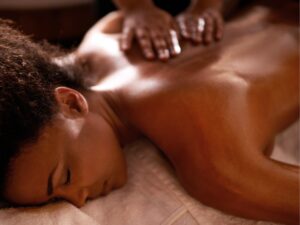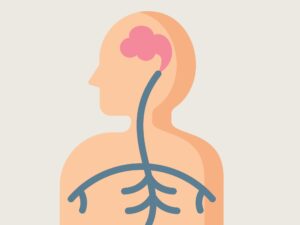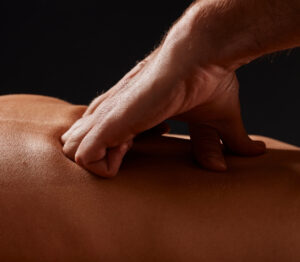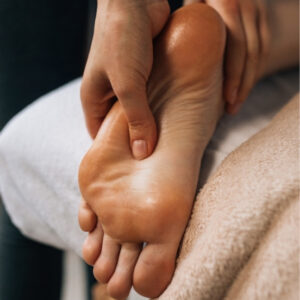How to Use Massage to Improve Sleep
posted July 20, 2025Sleep problems are common — about 1 in 3 U.S. adults isn’t getting enough rest according to the CDC. Over time, that kind of chronic sleep loss can raise the risk of serious health issues like high blood pressure, heart disease, and depression.
Massage therapy offers a natural way to support better sleep, helping your body shift into a calmer, more sleep-ready state. From calming the nervous system to stimulating key neurochemical pathways, massage offers a powerful way to support better rest.
Here’s how it works — and how you can make it part of your nighttime routine.
How Massage Supports Better Sleep
Massage therapy benefits more than just your muscles. Research shows that massage activates the body’s natural mechanisms for rest, recovery, and regulation, especially when practiced consistently.
Boosting Serotonin and Melatonin
Massage may help increase serotonin levels, a neurotransmitter that plays a central role in mood and sleep regulation. According to the Academy of Integrative Health & Medicine, serotonin is not only linked to relaxation, it’s also a precursor to melatonin — the hormone that helps control your body’s circadian rhythm. When serotonin levels rise, your body is better equipped to produce melatonin naturally, making it easier to wind down at night.
Activating the Vagus Nerve
The vagus nerve is part of the body’s nervous system that helps your body slow down and recover after stress. Moderate-pressure massage has been shown to stimulate this nerve, reducing heart rate and lowering cortisol, your primary stress hormone.
According to a peer-reviewed review in Frontiers in Psychology, massage increases activity in the vagus nerve — which helps the body relax more easily, improving mood, reducing anxiety, and promoting better sleep.
Interrupting the Stress-Sleep Cycle
If you find yourself lying awake, mentally reviewing your to-do list, or physically tense after a long day, you may be experiencing what researchers call hyperarousal, a chronic “always-on” state that prevents deep rest.
A review published in the International Journal of Molecular Sciences explains that massage can help calm your body’s stress response — also known as “fight or flight.” It does this by improving blood flow, relaxing tight muscles, and sending signals through the nervous system that tell your brain it’s safe to rest.
Over time, these changes can help your body handle stress better and make it easier to fall asleep and stay asleep.
How to Incorporate Massage Into Your Sleep Routine
Book Regular Massage Sessions
While even a single massage can leave you feeling more relaxed, studies show that regular sessions provide deeper and more lasting effects. Some popular techniques include:
- Swedish massage: Uses long strokes and gentle kneading to promote general relaxation
- Deep tissue massage: Works on deeper muscle layers to relieve chronic tension
- Trigger point therapy: Targets specific tight areas, often experienced as “knots”
If better sleep is your goal, consistency matters. Consider integrating massage into your self-care plan — whether weekly, bi-weekly, or monthly.
Natural Body offers evening appointments until 7pm on Sundays – Thursdays and until 9pm on Fridays and Saturdays. Scheduling regular sessions into your evenings over time is easy when you book your massage appointments online or by phone at 404.609.0060. You can save on the cost of your massages in quantities of 6 or 12 sessions,too. Purchase 5 massages and get the 6th free, or purchase 12 massages for the price of 10.
Try These At-Home Massage Techniques
Can’t get to a spa as often as you’d like? Self-massage can be a great way to prepare your body for rest. These techniques focus on calming key pressure points and signaling your nervous system to relax.
Foot Massage
The bottom of the foot has thousands of nerve endings, and massaging them can help your whole body relax. While some areas are believed to connect to specific body parts — a practice called foot reflexology — even a general foot massage can help ease tension and support better sleep.
Start by gently squeezing or pressing your feet in a way that feels good. You can also roll the sole of your foot over a tennis ball, lacrosse ball, or massage ball for deeper pressure.
- Spend extra time pressing just below the ball of your big toe — hold for 5 to 10 seconds.
- Rub the outer side of your big toe, which may help stimulate melatonin production.
- Massage the ridges of your toes to relax your neck and shoulders.
- Apply light pressure to the ball of your foot to calm your breathing.
Massaging each foot for 5 – 10 minutes before bed will help signal to your body that it’s time to wind down.
Head Massage
Another massage that may help calm a racing mind is scalp massage. Your head has some acupressure points that can be helpful for sleep.
- Start by rubbing the middle of the top of your head:
- If you drew two lines up your skull from the top of both ears, this point is right where they would meet.
- Push straight down or rub your head in a circular motion about 100 times.
- Then, move to the points where your eyebrows end near your nose:
- Again, you can apply direct pressure here or move your fingers in tiny circular motions.
- Try to push at least 30 times or make 30 circles.
- Finally, rub along your eyebrows and just under your eyes.
- Use longer, sweeping motions here, rubbing the whole eyebrow in one movement.
- Try to do both eyes at the same time, at least 20 times.
Face massage
If you carry stress in your muscles, you may carry more of it in your face than you think. Massaging your face can release this tension, helping you rest better.
- Begin this massage wherever your face feels tight.
- Start with the large muscles at the back of your jaw.
- Press gently into them and make small circles with your fingers.
- Explore these muscles for hidden tension, massaging the tension away.
- Move to your temples.
- Don’t put too much pressure here, but explore for the areas that feel tender.
- Then, make gentle circles on that spot.
- As the pressure releases from your temples, you can press harder.
- End by massaging your forehead.
- Massage straight up and down the bridge of your nose, or follow the pattern of your eyebrows in bigger and bigger arcs until you have covered your whole forehead.
This simple practice can release muscular tension and help quiet your thoughts.
Final Thoughts: Rest Comes Easier When Your Body Feels Safe
Massage therapy can play a meaningful role in creating the conditions your body needs for deep, restorative sleep. Whether you schedule professional sessions, practice calming rituals at home, or combine both, you’re giving your nervous system the signal that it’s safe to rest.
Working with your body’s own biology can help build better sleep, one night at a time.
Book A Massage Online Call To Schedule




